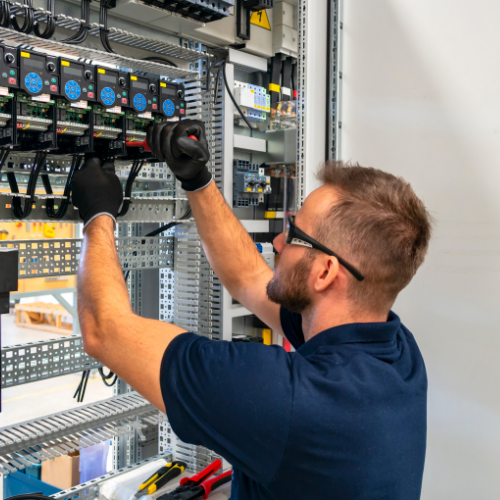How to replace an electrical panel
by siteadmin

The electrical panel, which is usually located in your basement, garage, or utility room, is the heart of your home's electric system. The electrical panel, a large gray box with rows of switches is where all your appliances and home systems are controlled. You can also add circuits to the electrical panel if necessary. You may want to upgrade your house, or you might just want to ensure that your breakers meet code.
Breakers that are Frequently Used
Electrical panels that are outdated and do not provide enough power to run modern electronics and appliances can cause flickering lights, or the need to frequently replace light bulbs. Overheating and fires can be caused by an outdated electrical panel not meeting the power needs of your family.
On the front of an electric breaker, you will usually find a number that indicates the area it is for. Open the panel in the basement, garage, or utility room to check for the index. You can check the index by opening up the electrical panel door in your basement, garage or utility room.
Before you begin any electrical work, even replacing an old panel, it's best to obtain a permit. You can avoid expensive fines and other problems by ensuring that you comply with local building codes. Licensed electricians also know the rules and regulations of your city.
To begin, turn the reset lever of the panel to the OFF position. Carefully remove the screw that holds the cover plate. To reach the corner screws, you may need a screwdriver that has a long extension. After removing the cover, find the breaker that needs to be replaced. Switch it off. Untangle the black circuit wire that is connected to the breaker. Hold the cover plate in position and loosen the two middle screws with your screwdriver.
Be sure to get the correct breaker for your panel when you add a new one. It's vital to choose a circuit breaker compatible with your panel type and size. Circuit breakers are manufactured by their panel manufacturers. For example, Square D QO panels and Homeline panel types only accept breakers that are specifically designed for them. You may be able use certain breaker types with other panels but they will not fit properly and could result in an unsafe connection.
Install the breaker in the panel after you have found one that fits the space. Push the breaker in its clip and align it with the bus bar. Then connect the wire. This process should be repeated for each breaker in need of replacement.
The electrical panel, which is usually located in your basement, garage, or utility room, is the heart of your home's electric system. The electrical panel, a large gray box with rows of switches is where all your appliances and home systems are controlled. You can also add circuits to the electrical panel if necessary. You…
Recent Posts
- Your Trusted Partner for Roof Repair and Installation in Helena, MT
- Harnessing the Sun: The Rise of Solar Energy in Northern Territory, Australia
- Illuminating Choices: Exploring Wired and Wireless Control Options for Lighting Installation
- Illuminating Spaces: Exploring the Fundamentals of Lighting Design and Installation
- The Electric Evolution: Embracing the Future with Electric Vehicles
